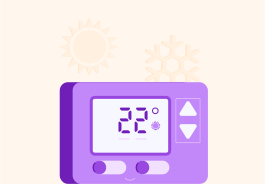YOU ARE LEARNING:
What Is Homeostasis?

What Is Homeostasis?
Organisms or cells maintain optimal conditions for function by regulation, a process known as homeostasis.
What do you think we mean when we talk about homeostasis? Check out the hint if you need a clue.

Homeostasis controls an organism's internal environment. Select all the factors that you think might be controlled through homeostasis.

You can select multiple answers
Homeostasis is the process of maintaining a body's steady internal environment despite external changes. Your body's internal environment includes temperature, pH and concentrations of substances (such as water, sugars, salts and gases).
Name the important class of proteins that you think would be most affected by changes in temperature and pH. They begin with an "e".

Cells and enzymes need specific, stable conditions to function properly. A stable temperature and pH are essential for enzymes to work well and keep their shape.
Which of these options do you think are examples of homeostasis? Pick all the ones you think are correct.

You can select multiple answers
Let's look at some examples of homeostasis.
Thermoregulation
Controlling the body's temperature. The best temperature for the human body is 37 °C.
Osmoregulation
Controlling the body's water concentration. Water will move out of cells if their water concentration is too high and they could burst.
Blood glucose levels
Controlling the amount of glucose (sugar) in the blood. Diabetes is the result of poor control of blood sugar levels.
What is the best temperature for the human body?

If a cell's water concentration is too high, it could...

The name for the disease where blood sugar levels are not properly controlled is...

